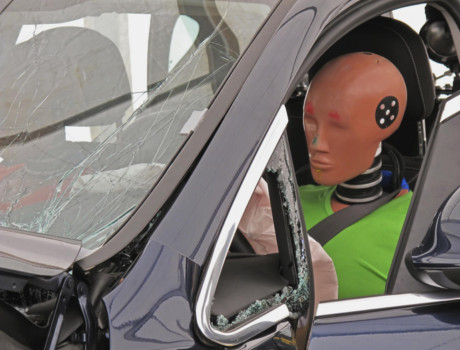Site: Home > Home > News and events
QINSUN Automotive Safety Information: The Most Dangerous Profession: Crash Test Dummy. Crash test dummies were originally used in places related to aircraft such as ejection seats and parachutes. In 1960, the United States first developed the car crash test simulation dummy VIP, and then in the SAE (Society of Automotive Engineers American Society of Automotive Engineers) standard, the 50th simulation dummy (that is, the 50th percentile dummy - press According to statistics, 50% of men in the United States have a lower body weight and seat height than the dummy. The size, weight, spring constant, etc. are stipulated.
With the in-depth study of bionics and human injury mechanism in crash accidents, new progress has been made in the research and development of simulated dummies: Hybrid I, a hybrid I dummy, was developed in 1971. , the neck, shoulder, spine and knee were improved, and the configuration of the test instrument was enhanced. In 1972, the Hybrid II dummy was developed, and in 1973, the Hybrid was adopted in the FMVSS208 standard (occupant crash protection) II 50th dummy is used as a standard facility for evaluating occupant crash protection performance in automotive crash tests, and a standard for dummies is established in federal regulations. , which is also used in FMVSS 212 and 301.

In 1976, General Motors made a lot of improvements to the neck, chest, knees, etc. of Hybrid II, and developed a hybrid III dummy Hybrid III, which is closer to the characteristics of the human body. More than 100, greatly exceeding the Hybrid II, to meet the needs of further research. In addition, the improvement of the neck and other parts makes the damage index value measured by the Hybrid III dummy may be higher than that of the Hybrid II, which puts forward higher requirements for the occupant protection performance of the vehicle.
On July 25, 1986, the United States revised 49CFR Part 572, which added a new division about Hybrid III, and stipulated in the FMVSS 208 standard from October 23, 1986 to August 31, 1991, Hybrid II and Hybrid III dummies can be used in the car crash test, and since September 1, 1991, Hybrid III will replace Hybrid II and be the only test dummy to verify whether the vehicle meets the performance requirements of FMVSS208 , and later, due to some practical factors, it was decided to postpone the replacement date to September 1, 1997.
In order to further meet the needs of automobile crash test research and biomechanical research, the United States has developed a family of test dummies. In addition to Hybrid II and Hybrid III stipulated by regulations, SID and child dummies for side collisions have also been developed and produced.
European countries are also carrying out research on the development of dummies for automobile crash tests. Appendix 7 of Article R16 of the ECE (United Nations Economic Commission for Europe) Regulations (Agreement on the Uniform Conditions for the Certification of Automobile Seat Belts and Their Backup Systems) stipulates that The one-leg dummy used in Europe (the dummy weighs 74.5kg and has a height of 175cm), this dummy is only used for the dynamic test of the seat belt in ECE R16, and only requires high-speed photography to measure the displacement of the dummy's bones and chest. . On the other hand, the EuroSID dummy for side impact has also been developed in Europe and has been used in crash tests, but there is no corresponding regulatory description.
Regarding the test dummy for automobile collision, there is no unified international standard so far. The Hybrid II and Hybrid III dummies are the most used in various countries, and the world's major car companies including Mercedes-Benz and Volkswagen in Europe. Both Hybrid II and Hybrid III dummies are used extensively in automotive crash test studies.
According to the type of human body, the dummy can be divided into adult dummy and child dummy. Adult dummies are divided into medium-sized male dummies, small-sized female dummies and large-sized male dummies according to body size. The medium-stature dummy is the most commonly used in automobile crash tests, which represents the average stature of the 50th percentile adult male in Europe and America. In order to consider different human body shapes in the design, and according to the limits of the two ends of the European and American human body distribution, small and large dummies were developed respectively. The small stature female dummy represents the body shape of the 5th percentile female adult in Europe and the United States; the large stature male dummy represents the 95th percentile male adult body shape in Europe and America. The height and weight of the child dummy are the average height and weight of children in the specified age group, regardless of gender.
According to the type of crash test, dummy can be divided into frontal crash dummy and side crash dummy. Three side impact dummies are now allowed to be sold as commercial products: SID, EuroSID and BIOSID. These three dummies are developed according to the 50th percentile adult male figure. SID is the test dummy specified by the side impact test regulations of the United States, and EuroSID is the test dummy specified by the side impact test regulations of Europe, Japan and other countries. .
Copyright 2022:Qinsun Instruments Co., Limited
High-end textile tester supplier Email:info@qinsun-lab.com | Textile Testing Equipment pdf | Tel:021-67800179 |